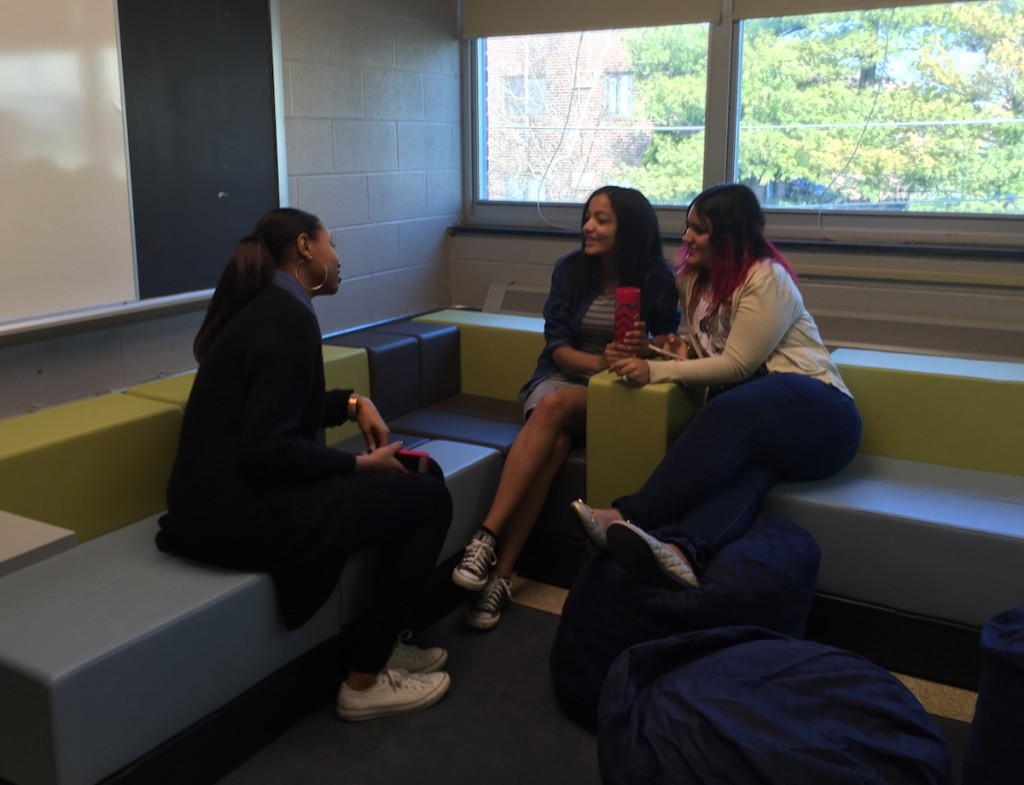Want to engage high school students? Let them design their own classrooms
 April 6, 2016
Category: Method, Short
April 6, 2016
Category: Method, Short
Rows of desks facing a lecturer and a chalkboard is an antiquated classroom design with Industrial Age roots.
Thanks to a $20,000 grant from the William Penn Foundation, Philadelphia Academies Inc. has given students at the Academies of Roxborough High School a shot at designing their own classrooms.
The program is called Classroom NEXT, and it aims to better impact student engagement, behavior, learning abilities and academic achievement by making classroom design malleable and collaborative.
“The physical space is set up differently. It can be moved, and everything is on wheels,” said Christine Arnold, coordinator of the Freshman Academy at Roxborough. “It’s a physical space that can be moved around to work with groups [leading to] more student engagement.”
Students aren’t just sitting there receiving information, Arnold said. They’re active.
The actual format, headed up by the University of the Arts‘ industrial design instructor Jonas Milder, was developed to place ownership of the classroom in the hands of the students.
“In terms of developing a good design, you have to involve the people that will be affected by the design,” Milder said. “The process we went through for the last year or so was very much driven by stakeholders — students at the schools, faculty, teachers and administrators. This was an opportunity to empower students and people using the space by involving them in determining what the space should be like.”
Connie Majka, director of learning and innovation at Philadelphia Academies, Inc., said the design complements the Academy model well.
“The space reflects the idea of working together as a team as opposed to having one expert in the front just talking,” she said. “In the academy model, we try to give students the exposure of how that geometry class translate in the real world.”
A static space might complicate multidisciplinary courses and place subjects in their traditional silos, Majka said.
“The model is shifting from the teacher delivering to the teacher facilitating and students taking charge and having agency,” said Milder. “Not just their space, but their curriculum, their interests, who they think they are and who they want to become.”
Trending News










